A history of Czechoslovak aircrew trainees at 111 OTU, Bahamas during World War 2

Liberator BZ810 (MA) of 111 OTU
The last Czechoslovak aircrews passed out from No.6 (C) OTU at Silloth in August 1943 and shortly after the ‘Czechoslovak Flight’ was disbanded. A new training base was needed and No.111 (Coastal) OTU in the Bahamas was selected. The location would provide better flying weather, leading to greater continuity in training and less likelihood of contact with the enemy. The unit also operated the B24 Liberator, the aircraft with which 311 Squadron had re-equipped during the early to mid part of 1943. The initial part of the crew training would be undertaken using the twin-engined B25 Mitchell’s (Mk’s I, II and III). The second, semi-operational stage would be undertaken using the B24 Liberator GR III, GR V and later GR VI and GR.VIII. Whilst the unit was under RAF command a group of Czechoslovak instructors would also be on hand to lead the trainees through flying and operating the B25 and the B24. and a Czechoslovak officer would oversee the Czechoslovak’ contingent.
The unit had been formed in August 1942 to train crews in the general reconnaissance role, using the types of aircraft then being delivered by the USA under ‘lend lease’. By the end of 1942 the OTU had nearly 30 B24’s on strength and had begun to perform patrols in the Caribbean area in conjunction with the USAAF and USN. At this time it was also decided that the unit would dedicate itself to training crews that were going to be operating the B24 in both the European and South East Asia areas of operations. It was also decided that upon completion of their training the crews would ‘ferry’ a B24 across the Atlantic to Prestwick in Scotland.

The training was to be carried out in three integral squadrons, numbered 1, 2 and 3 (they had originally been A, B and C Squadrons). The first two were equipped with the B25 Mitchell, with ‘A’ Squadron providing training for pilots and navigators. By 1943 Approximately 50 B25’s were based at Oakes Field. It was seen as an ideal aircraft for conversion to the B24, not least because of its similar tri-cycle undercarriage, something with which RAF crews would not be particularly familiar. The pilots and navigators would then join the wireless operators and air-gunners in ‘B’ Squadron to form the new crews. The B24 Liberators were operated by ‘C’ Squadron from nearby Windsor Field.

B25 Mitchell’s of 111 OTU in flight. In the background is KJ593 (B), a Mk III, and in the foreground FV954 (FB), a Mk II.
In addition to the Czechoslovaks, large numbers of Canadian (RCAF) and RAF aircrew were to be trained by the unit during its two years in the Caribbean. Whilst classroom activities were, as might be expected, an essential part of the training, operating the aircraft meant that a considerable number of navigational and radar homing exercises, practice anti-submarine patrols, fighter affiliation exercises, low level bombing and photographic sorties, air to air and air to sea firing exercises were undertaken. All of which largely took place during daylight hours. However, night flying also played a part, when exercises with the Liberators in the use of the Leigh Light would be undertaken. The training courses would usually finish with an up to ten hour practice anti-submarine patrol, usually entitled ‘Esco’ or ‘Kingsley’.

B25 Mitchell (FF) of 111 OTU.
The first Czechoslovak crew to complete the training didn’t unfortunately come through unscathed. They commenced their training (as part of Course No. 7) on the 21st of June 1943 and the nominated crew consisted of Flt/Lt Jan HRNČÍŘ, Sgt Vítězslav BŘÍZA, F/O Jaroslavl MOTL, Sgt Jan BUCHTA, Sgt Karel SALZ and Sgt Jozef TURNA.
Towards the end of the first part of their training, on the morning of the 7th of August 1943, the crew carried out a training sortie in Mitchell FR352 (DF) returning shortly before lunch. It was thought that the wireless operators (Sgt SALZ and Sgt TURNA) required additional assessment and after lunch they went aloft again in Mitchell FV953 (FA), which on this occasion was piloted by Flying Instructor P/O Jan HADRÁVEK, they were also accompanied by the Radio Instructor Flt/Lt Jaroslav MAREŠ. The aircraft got airborne at 1500 hours, but according to an eye witness it appeared to lose power at a height of 250 to 300 feet and spiralled into the ground to the east of Nassau. Those that perished were 149112 P/O Jan HADRÁVEK (Flying Instructor), 787341 F/Sgt Josef ŠOTOLA, 787155 Sgt Vitezslav BŘÍZA, 101497 Flt/Lt Jaroslav MAREŠ (Radio Instructor), 788106 Sgt Karel SALZ and 788278 Sgt Jozef TURNA.They were buried the next day in Nassau War Cemetery.


The crew was reconstituted and finally consisted of Ft/Lt Jan HRNČÍŘ, F/Sgt Josef DROBNÍK, F/O Jaroslav MOTL, Sgt Jan BUCHTA, Sgt Tibor KARAS, Sgt Josef MIKULEC and Sgt Bohuslav HUBENÝ. They completed their training on the 18th of September 1943.
| Crew: | Course No | Personnel: |
| 1 | 7 | consisted of Flt/Lt Jan HRNČÍŘ, Sgt Vítězslav BŘÍZA, F/O Jaroslavl MOTL, Sgt Jan BUCHTA, Sgt Karel SALZ and Sgt Jozef TURNA. Course duration 21.6.43 to 7.8.43. |
| 1 | 7 | consisted of Ft/Lt Jan HRNČÍŘ, F/Sgt Josef DROBNÍK, F/O Jaroslav MOTL, Sgt Jan BUCHTA, Sgt Tibor KARAS, Sgt Josef MIKULEC and Sgt Bohuslav HUBENÝ. Course duration 7.8.43 to 18.9.43. |
| 2 | 7 | consisted of F/O František NAXERA, F/Sgt Josef JIROUTEK, F/O Václav ŽDÍMAL, Sgt Ladislav ŽILÁK, Sgt Josef KUBÁT, Sgt Václav JANDA and Sgt Walter STANO. They passed out and flew to Miami on the 28th of September 1943 en-route for the UK. |
The commander of the Czechoslovak contingent at this time was Sqn/Ldr Bohumil LIŠKA. The Flying Instructor for the B.25 was P/O Jan HADRÁVEK, the Navigation Instructor was F/O Jaroslav MOCEK and the Radio telegraphy Instructor was Flt/Lt Jaroslav MAREŠ. Following their deaths on the 7th of August, HADRÁVEK and MAREŠ were replaced in September 1943 by Flt/Lt Karel SCHOŘ and in February 1944 by Flt/Lt Vladimír DOMINIK respectively. In addition Flt/Lt František RADINA and F/O Jan IRVING were also appointed in September as Flying Instructors for the B24. The instructing staff were further supplemented by experienced 311 Sqn airmen who had completed their operational tour and where deployed on instructional roles whilst on their non-operational rest periods between tours.

Jan Irving with one his training crews
From this point on crews began to flow through the system quickly and they are listed below;
| Crew: | Course No | Personnel: |
| 3 | 9 | F/O Alois ŠEDIVÝ, F/O Vladimír SLÁNSKÝ, F/O Jaromír FRANCŮ, Sgt Josef MATĚJÍČEK, Sgt Arnošt FLEISCHMANN, Sgt Petr GIBIÁN and Sgt Jan PECNÍK. (Initially the crew was to be captained by Sgt ŠOTOLA but following the accident on the 7th of August F/O SLÁNSKÝ took over. The course began on 23.8.43. and ended on 13.11.43 |
| 4 | 9 | W/O Arnošt JEDOUNEK, F/Sgt Miloš ŠAFRÁNEK, F/Sgt Hanuš KORDA, Sgt Bohumil HROCH, Sgt František KUDLA. Sgt Josef HOSTÁŠEK and F/Sgt Štefan DUBRAVA. The course began on 7.8.43 to 18.9.43 |
| 5 | 10 | F/O Jaroslav HÁJEK. W/O Gustav NETREFA, F/Sgt Karel SCHÜCK, Sgt Josef RUDINGER, Sgt František BEBENEK, Sgt František HRADIL and Sgt František CHOVANEC. The course began on 20.9.43. and ended on 24.12.43. |
| 6 | 11 | P/O Rudolf HAERING, W/O Jindřich BENEŠ, F/O František KORANDA, Sgt Alois JARMARA, Sgt Jaroslav BRÁZDIL, Sgt Štěpán BARABÁŠ and Sgt Josef DRBLÍK. The course began on 4.10.43. and ended on 24.12.43. |
| 7 | 11 | but it met with tragedy on the 23rd of November 1943. The crew consisted of 787495 W/O Miroslav STYBLÍK, 788225 Sgt Robert KRUPICA, 138871 F/O Josef ŠIMANDL, 788537 Sgt Hanuš TOMEK, 788441 Sgt Pavel FUCHS and 788423 Sgt Adolf OPLATKA. They got airborne in Mitchell FV952 (FX) shortly after 1835 hours for a night navigation exercise (Patrol 5 Night 2) together with several other B25’s. They encountered thunder cloud and bad weather including mist together with turbulence. One of the last messages from the aircraft indicated that it was heading towards Bimini with a course of 298 degrees. The aircraft disappeared and is believed to have come down in the sea near Bimini to the west of North Rock. A search was carried out but no survivors were found. The whole crew were posted as missing believed dead. The other aircraft taking part in the exercise managed to return to base safely. |
| 8 | 12 | consisted of F/Sgt Luděk MOUDRÝ, Sgt Lubomír VOLKA, F/Sgt Petr ARTON, Sgt Adolf KASAL, Sgt Jan GREGOR and Sgt Václav ČAPEK. Initially the crew was captained by F/O Pavel SCHULCZ, however at the end of the year he was posted back to the UK and in February 1944 took up a post as an instructor and interpreter at the RAF’s 105 (Transport) OTU at Bramcote. The course began on 18.10.43. and ended on 8.1.44. |
| 9 | 13 | consisted of W/O Karel POSPÍCHAL, F/O Rudolf KÖRPER, F/O František POLITZER, Sgt Václav ŠVEC, Sgt Václav ČERNÝ, Sgt Josef KOŠTÁL and Sgt Rudolf BARVÍŘ. The course began on 1.11.43. and ended on 22.1.44. |
| 10 | 14 | consisted of P/O Vratislav ŽEŽULKA, Flt/Lt Karel KVAPIL, Sgt Vilém BERMAN, Sgt Bohdan KLEIN, Sgt Jiří POLÁČEK, Sgt František MĚŘÍNSKÝ and Sgt Ján FILIP. The course began on 15.11.43. and ended on 5.2.44. The crew departed to Miami together with crew 9 on 8.2.44. |
| 11 | 16 | consisted of W/O Ludvík KOŠEK, P/O Karel NOVOTNÝ, Sgt Jan HORNUNG, Sgt Maxmilián MAYER, Sgt Bohumil ONDRÁK, Sgt Pavel DŘEVĚNÝ and Sgt Robert KELLNER. The course began on 13.12.43. and ended on 4.3.44. |
| 12 | 16 | consisted of Flt/Lt Rudolf PROTIVA, P/O Ladislav ŠESTÁK, P/O Ervín KOVÁČ, Sgt Pavel WECHSBERG, Sgt Jaroslav KOLÁČEK, Sgt Jiří KAFKA and Sgt Josef SZARKÖZY. P/O ŠESTÁK and P/O KOVÁČ both fell sick during the course and were temporarily replaced by Sgt Bohuslav PAVLÍK (who would finish his training as part of Crew 19) and F/O Miroslav PLAŇAVA (who would finish his training as part of Crew 18). Despite the sickness the whole crew was able to finish the course, which finished on 4.3.44. (see above). |
On 22 February 1944, the Duke of Windsor, Governor of the Bahamas, visited Oakes Fields for an inspection of 111 OTU. He inspected the Czechoslovak contingent and was accompanied by G/Cpt Alexander Hess, former 310 Sqn C/O and pilot and now Czechoslovak Air Attache in Ottawa, Canada.

Czechoslovak airmen of 111 OTU being inspected by the Duke of Windsor.
| Crew: | Course No | Personnel: |
| 13 | 18 | consisted of P/O Leo LINHART, Sgt Antonín MEDŘICKÝ, Sgt Hanuš LENHOFF, Sgt Jaroslav POLACH, Sgt Kurt KOHN and Sgt Jan ROUBÍK. The course began on 10.1.44. and ended on 1.4.44. (see above). |
| 14 | 18 | consisted of Sgt Oldřich BUREŠ, P/O Josef HUBIČKA, Sgt Otto MANDLER, Sgt Václav KRYMLÁK, Sgt Antonín BEDNÁŘ and Sgt Martin DORNIAK. The course ended on 1.4.44. (see above) and both crews left for Miami on the 3rd of April. |
| 15 | 20 | consisted of P/O Josef PAVELKA, Sgt Josef ŠNOBL, Sgt František KLEMENS, Sgt František MALÝ, Sgt NOVÁK and Sgt Valentin NOVÁK. The course began on 7.2.44. and ended on 29.4.44. |
| 16 | 20 | consisted of F/O Viktor VÝCHA, Sgt Miroslav POLACH, Sgt Leo TURNOVSKÝ, Sgt Konrád DEUTSCH, Sgt Dezider NEMÉTH and Sgt Otto BAUER. The course ended on 29.4.44. (see above). |
| 17 | 22 | consisted of W/O Jan ŘÍHA, F/O Jiří OSOLSOBĚ, F/O František KREJČÍ, Sgt Jiří MÜLLER, Sgt Evžen GLASNER, and Sgt Vladimír VRBA. The course began on 6.3.44. and ended on 27.5.44. |
| 18 | 22 | consisted of F/Sgt Jan MATĚJKA, Sgt Miloš BODLÁK, F/O Miroslav PLAŇAVA (see crew 12 above), Sgt Oldřich LINKA, Sgt Bernard LEBOVIČ and F/O Jaroslav KAMARÁD. Sgt Stanislav MIKULA also commenced his training with this crew, but was to complete it later with Crew 22. The other six airmen completed the course on 27.5.44. (see above). |
| 19 | 24 | consisted of F/Sgt Jaroslav KUDLÁČEK, Sgt Bohuslav PAVLÍK, Sgt Karel RYBNÍČEK, Sgt Bedřich BOK, Sgt Max DIAMANT and Sgt Jan KUCHARIČ. The course began on 3.4.44. and this crew completed on 24.6.44. |
| 20 | 24 | initially the crew consisted of Flt/Lt František JANOUŠEK, P/O František KAVÁLEK, Sgt Bohumil RYŠÁNEK, Sgt Jan ŠUSTR, Sgt Karel OTTA and Sgt Jaroslav SAXL. Unfortunately, Flt/Lt JANOUŠEK was to be promoted and posted as the senior officer of the Czechoslovak Element of the OTU with effect from the 24th of June. He was replaced by Flt/Lt Vladimír SLÁNSKÝ and the crew had to repeat some elements of the ‘C’ Squadron training with the new ‘skipper’. They finally completed their training together with crew 21 on 22.7.44. |
| 21 | 26 | consisted of F/Sgt Josef TICHÝ, P/O Antonín VRCHOTKA, F/O Vladimír VÁVRA, Sgt Ján NOVOTNÝ, Sgt Josef GEIER and Sgt Jaroslav ŠIŠPERA. Also involved was Sgt František DAVID, who finally completed his training with Crew 22. Sgt Alois NOVÁK was also involved, but had to re-do part of the wireless training and thus completed his training later as part of Crew 23. The course began on 1.5.44. and ended on 22.7.44. |
| 22 | 28 | consisted of F/Sgt Miroslav ŠIGUT, Sgt Jan ČEKAL, Sgt Antonín NĚMEC, Sgt Helmuth FRÜHMAN , Sgt František DAVID (see Crew 21 above), Sgt Andrej LOPUCH, Sgt Stanislav MIKULA, Captain of the crew was initially Flt/Lt Josef SIMET, but he was badly injured whilst bathing and had to undergo treatment in Nassau. Once released from hospital he was transferred to Course 32 to complete his training.The course began on 29.5.44. and ended on 19.8.44. |
| 23 | 28 | consisted of Flt/Lt Vladimír SLÁNSKÝ, Sgt Bohumil PROKOPEC, Sgt Bernard DEUTSCH, W/O Milan STEHNO, F/Sgt Josef CHYTRÝ and Sgt Alois NOVÁK (see above under crew 21). After completing his training Flt/Lt SLÁNSKÝ was transferred to take over crew 20, which had been left leaderless following the departure of Flt/Lt JANOUŠEK. P/O Jaroslav POLÍVKA took over as ‘skipper’ and the crew finally completed thir training on 16.9.44. The course had originally begun on 29.5.44. |

Windsor Field, 1944, left to right; Flt/Lt Protiva (crew 12), P/O Zezulka (crew 10), Flt/Lt Kvapil (crew 10) and Flt/Lt Radina , an instructor with 111 OTU.
| 24 | 32 | consisted of Flt/Lt Josef SIMET (see above under crew 22), Sgt Zdeněk PALME, Sgt Zdeněk MUNZAR, Sgt Jozef VANIŠ, Sgt Vojtěch LUKÁŠ and Sgt Josef CHOVANEC. Around this time instructions were received from the RAF, stating that the Czechoslovak crews would be supplemented by the addition of up to ten RAF/RCAF airmen. As a result Sgt M Wallace (a flight engineer) and Sgts J Leach and A McVicar (both gunners) completed their training with this crew. The course began on 24.7.44. and ended on 14.10.44. |
| 25 | 32 | consisted of Flt/Lt Oldřich HOŘEJŠÍ, Sgt Miroslav PAVLOVSKÝ, F/O Eduard WICHTA, Flt/Lt Eduard ŠIMON and Sgt Antonín PADEVÍT. Also originally in this crew were Sgt Zoltan BOCK and Sgt Jan STEIN, who were transferred to crew 26. Plus Sgt Jaroslav PROKOP, who was transferred to crew 27. In addition three RAF/RCAF airmen were placed with the crew; Sgt R Patient (flight engineer) and Sgts D Logan and C Mcleod (both gunners). |
| 26 | 32 | consisted of F/Sgt Robert PROCHÁZKA, Sgt Karel FIALKA, Sgt Jan MUNK, Sgt Václav KNOLL, Sgt Jan STEIN (see above under crew 25), Sgt Zoltan BOCK (see above under crew 25). Also completing their training with this crew were three RAF/RCAF airmen; Sgt C Williams (flight engineer) and Sgts M Vercamer and D Oddy (both gunners). All three crews did exceptionally well in the final exercise of the course. They all departed from Nassau on 21.10.44. |
During the spring of 1944 the unit received several Liberator GR.VIs, these aircraft were fitted with a nose turret).
Typical aircraft in use by the 111 OTU at this time (October 1944) included ;
B25 Mitchells – FW145 (FM), FW147 (FO), FW150 (FP), FV946 (FF), FV954 (FB), FV 997 (FG), HD308 (FU), HD327 (FV), HD330 (FW), KJ580 (JD), KJ586 (JD), KJ668 (FJ), KJ671 (JX), KJ718 (JM), KJ719 (JL);
Liberators – BZ757 (LR), BZ761 (LN), BZ762 (LO), BZ808 (LY), BZ809 (LZ), BZ811 (MB), EV886G (ND), EV896 (NA), EV935G (NX), EV987 (NB), FL962 (LG), FL964 (LD), FL967 (LJ), FL968 (LF), FL993 (LB) and FL994 (LA).

Liberator GR.VIII KH262 (NH) of 111 OTU
| Crew: | Course No | Personnel: |
| 27 | 34 | consisted of F/Sgt Jozef CHABÁK, Sgt Zdeněk LIPA, F/O Valter KAUDERS, F/O Jiří BOEHM, W/O Jaromír POTYKA, Sgt Antonín DURKAČ and Sgt Jaroslav PROKOP (see above under crew 25). Also completing their training with this crew were RAF/RCAF airmen Sgt H Hall and Sgt C Fische (both gunners). The course began on 21.8.44. and ended on 12.11.44. The crew departed from Nassau on the 15th of November. |
| 28 | 36 | consisted of W/O Jindřich BENEŠ, Sgt František BRET, F/O Arnošt ŠVERMA, F/Sgt Hanuš AUER, F/Sgt Josef JEDLIČKA and Sgt Jan GAZDARICA. Also attached to the crew were two RAF/RCAF gunners Sgts J Sankus and D Balfour. The course began on 18.9.44. and ended on 9.12.44. |
| 29 | 36 | consisted of F/Sgt Josef KLESNIL, Sgt Ilja HRUŠÁK, F/O Ladislav SNÍDAL, W/O Karel TRUXA, Sgt Oskar KREBS and Sgt Karel SPITZKOPF. In addition two RAF/RCAF gunners were attached to the crew; Sgts K Kirk and K Peck. The course ended on 9.12.44.
Both crews on Course 36 left Nassau on 13.12.44. |
| 30 | 40 | consisted of Flt/Lt František DOLEŽAL, Sgt František KRÁL, F/O Karel ŠTĚPÁN, Sgt Jan STACH and Sgt Jaroslav SCHELLONG. Sgt Josef HAŠLAR was also originally part of the crew, but he was transferred to crew 33. The course began on 27.11.44. and ended on 17.2.45. |
| 31 | 40 | consisted of F/Sgt Jan POSNER, Sgt František MEZULÁNÍK, F/O Vladimír VANĚK, Sgt Karel REISER and Sgt Robert OESTERREICHER. Originally it was intended tha Sgt Josef PAŘEZ would be part of this crew but he was released and posted back to the UK on 27.12.44. Attached to the crew were three RAF/RCAF airmen; Sgt A Falconer, Sgt D Marshall and Sgt Nicholls. |

A mixed group of trainees from Courses 30 and 31 leaving Liberator BZ811 (MB) after a training sortie.
Both the crews that had been on Course No.40 left Nasau on 21.2.45. Around this time the unit began to receive Liberator GR.VIIIs, these aircraft were equipped with the advanced ASV Mk.X radar and additional anti-submarine equipment.
| Crew: | Course No | Personnel: |
| 32 | 42 | consisted of Flt/Lt František MACHÁLEK, Sgt Miroslav SEDLÁČEK, F/O Jaroslav DOLEŽAL, Sgt Karel OSOBA, Sgt Jakub ŠTĚPÁNEK and Sgt Josef HRADIL. The course began on 27.12.44. and ended on 17.3.45. The crew left Nassau on 21.3.45. |
| 33 | 44 | consisted of Flt/Lt Karel LANCZIK, Sgt Emanuel BRTVA, F/O Robert KOBLOVSKÝ, Sgt Emil DURICA, Sgt František KACUR, Sgt Arnošt TRAUBMANN and Sgt Josef HAŠLAR (see crew 30 above). The course began on 22.1.45. and ended on 14.4.45. |
| 34 | 44 | consisted of F/Sgt Antonín BROŽ, Sgt Jaroslav LOVĚTÍNSKÝ, F/O Miroslav SOBOTA, Sgt Jan HEIN, Sgt Boleslav IVÁNEK and Sgt Arnošt CHOVANEC.Both the crews that had been on Course No.44 left Nassau on 18.4.45. |
| 35 | 45 | consisted of W/O Bohuslav JAROŠ, Sgt Václav KADLČÍK, F/O Bohumir KRÉZEK, Sgt Václav JANDERA, Sgt Jaroslav PIKULA and Sgt Karel KRAKOVSKÝ. The crew also included two RAF/RCAF airmen Sgt Colli and Sgt Johnson. The course began on 5.2.45. and ended on 28.4.45. and the crew left Nassau on 2.5.45. |
| 36 | 47 | consisted of F/Sgt Miloš ŠAFRÁNEK, Sgt Vladimír SOCHOR, F/O Jaromir Danek, Sgt Hanuš VOGEL, Sgt Jaroslav LANDSFELD, Sgt Josef PRÁGL and Sgt Bohumil HOLEŠ. The course began on 5.3.45. and ended on 26.5.45. |
| 37 | 50 | consisted of Flt/Lt Jiří ENGEL, Sgt Jaroslav HOLÝ, F/O Josef HOŘEJŠÍ, Sgt Hanuš GROSZ, Sgt Tomas LÖWENSTEIN, Sgt Oldřich KULÍK and F/Sgt Václav ONDRÁČEK. The course began on 16.4.45. and ended on 7.7.45. |
This crew was the last Czechoslovak crew to complete training in the Bahamas and they departed for the UK on the 11th of July. The unit had been informed that it was to relocate to the UK and from the 25th of July personnel began to return home. The normal flight route was via Nassau – Bermuda – Gander – Lagens and Prestwick to Lossiemouth, the units new home in the UK. It was reconstituted later in the year with a mixed bag of Liberators and some Wellingtons. However, the demand for crews was falling and the number of aircraft was shrinking. By November 1945 the unit could only boast eight Liberators. It was officially disbanded in May 1946.
John Rennison
Flt/Lt (Ret’d)
1/2017
Article last updated 14 September 2017.

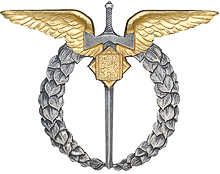


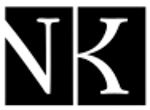

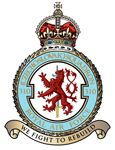
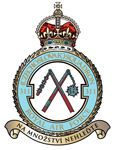
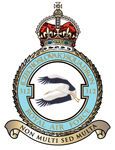
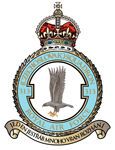


Thank you for this article! My father, Jaroslav Holy served in this group as what he used to call “Navigator B” which I understood to mean “copilot and navigator”. I remember my first flight to Europe when I was about 14, we landed in Gander NF and I recall him having some memories to recount but I didn’t understand it much at that time. Later, around 1995 or so we visited The Bahamas (Nassau) and he had many memories of standing in this or that precise location some 50 years earlier. At one of them he told some story of a pet monkey being in a cage!? He passed away in 2004, oddly of ALS which has been theorized to be connected with military service possibly. Around 2009 I had the opportunity to take my son inside one of last operational B-24s in the world, here in Scottsdale AZ. I was shocked at how cramped it was inside! My son loved the side machine guns and played “gunner” for a good while! Such history! – David Holy (does anyone know if Robert Kellner on this list is the one that later became a professor and psychiatrist in New Mexico?)
Nice to see my father, Hanus Vogel (Course 47) in your posting.
Before he died he gave me a scrapbook from his time in the Czech RAF. In the scrapbook is a signed photo from Wallis Simpson (Dutchess of Windsor). The Duke must have invited the OTU crews to tea one day.
My father then went operational with 311 Squadron, based in Tain, in Scotland. On the day he arrived at the base he was ordered to collect body parts from a crashed Liberator. Welcome to the war Sgt Hanus Peter Vogel.
As a child, I met my father’s pilot, Milos Safranek. He was famous for flying so low he could scare seagulls from the top of waves. When operational, and hunting U Boats, they didn’t fly with parachutes as they didn’t need them given how low they flew! My father thought this was great as it was so much easier to move around a Liberator without a bulky parachute!
He told me the only sub they ever found nearly got them into big trouble. They went into their bomb run but nothing happened. Apparently somebody forgot to open the bomb doors! When they got back to base they had to destroy the movie footage of their failed bomb run so they didn’t get into trouble!
Respect to all the Czechs who gave so much in the war and to all who served.
Other 111 Liberators were BZ722 LK, BZ746 LM, BZ760 LT, EV880 NC, EV992 & FL970. My father flew as a flight engineer on BZ762 which appears in the colour photo and also behind MA in one of the other photos.
Děkuji za článek..velice mne potěšilo že jsem se dočetl o bratrovi mého dědy.Jaroslavu Prokopovi..Vláďa
[Moderators translation: Thank you for the article. It was a pleasure to find out about my brother’s grandad Jaroslav Prokop. Vláďa]
Can you confirm that the Jaroslav Prokop you are referring to moved to England, married a Spanish woman (Franscesca) and died in England in the 1908s?
Vynikající článek. Děkuji!
[Moderators translation: Excellent article. Thank you!]
It’s fabulous to hear about these crews and the work they did. You are doing a fabulous job promoting them. Thank you.